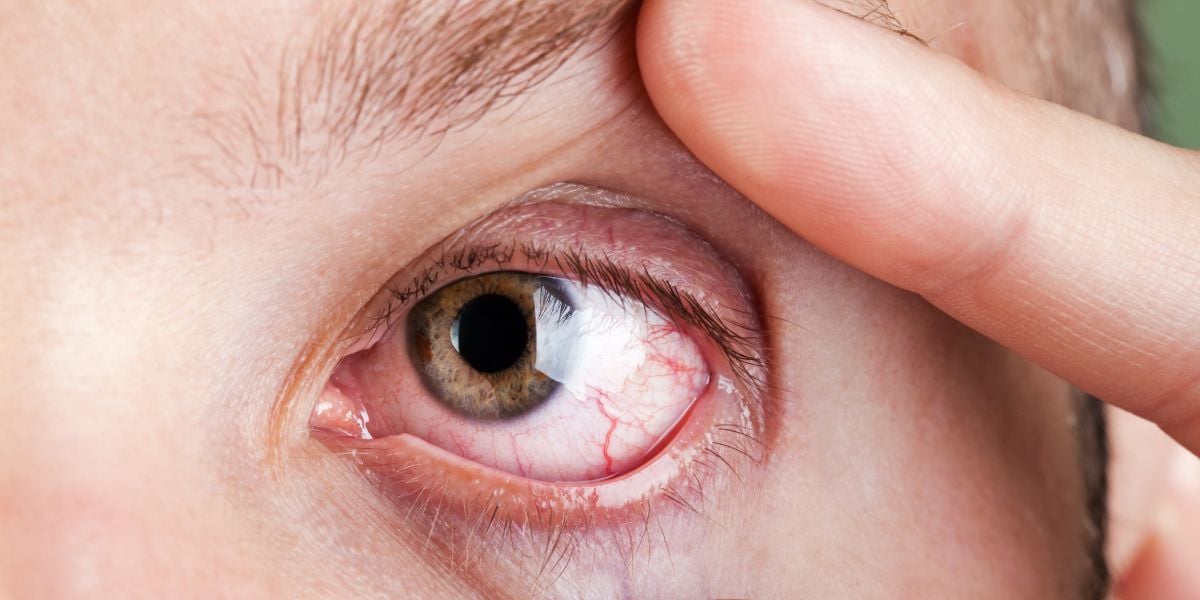Proliferative retinopathy is a developed form of retinopathy whereby new but weak blood vessels begin to form on the retina to help restore blood supply.
Proliferative retinopathy is the body’s attempt to save its retina but it can often lead scarring of the retina and can cause the retina to detach, leading to blindness.
Modern eye treatment can help to prevent blindness from occurring as a result of proliferative retinopathy.
Symptoms of proliferative retinopathy
Proliferative retinopathy can develop without causing symptoms so it is important to attend regular retinopathy screening checks.
Symptoms may occur as a result of a haemorrhage or detached retina which may include:
- Sudden appearance of floaters (dots, specks or streaks) in your vision
- Effect similar to cobwebs across your vision
- Distorted shape of objects
- Loss of vision
If you experience a sudden worsening in your vision, contact your health team.
How proliferative retinopathy develops
If a significant number of blood vessels on the retina become damaged, your body will respond by releasing a growth hormone known as Vascular Endothelial Cell Growth Factor (VEGF).
The growth hormone stimulates the growth of new blood vessels. However, these new blood vessels are particularly weak and prone to leaking which can lead to sight problems developing.
Problems which could occur as a result of proliferative retinopathy include:
- Vitreous haemorrhages
- Detached retina
Vitreous haemorrhages
Proliferative retinopathy can lead to new blood vessels growing out from the retina and into the vitreous humour (the gel within the eye ). If the vitreous humour shrinks it can pull on these blood vessels, causing them to bleed which can result in an appearance of cobwebs in your vision, making it more difficult to see.
Blood from a vitreous haemorrhage will dissipate but treatment will be required to prevent further problems. Treatment may include one or more of the following:
- Laser surgery – to help prevent the growth of new blood vessels
- Anti-VEGF injections – prevents growth of new blood vessels but is a more expensive treatment
- Vitrectomy – surgery to remove blood from the vitreous humour
Read more on treatments for retinopathy
Detached retina
Bleeding into the vitreous humour can cause the vitreous humour to shrink and this can lead to the retina becoming detached. Signs of retinal detachment include suddenly noticing floaters across your vision. The retina may become misshape, leading to distorted vision.
Surgery may be needed, although if you have minor tractional retinal detachment, surgery may not be necessary.
Treating proliferative retinopathy
Laser photocoagulation surgery helps to prevent new blood vessels from growing, therefore helping to prevent the complications that can result such as haemorrhage or a detached retina.
If you have proliferative retinopathy, you may need to undergo several sessions of laser surgery.
Laser surgery is usually effective but in cases where it is not, anti-VEGF injections may be required to prevent new blood vessels from growing.
Avoiding the progression of proliferative retinopathy
The University of Birmingham’s School of Medicine notes that maintaining good control of blood glucose levels can help to minimise the progression of proliferative retinopathy.
Quitting smoking can also significantly help to slow down the development of retinopathy.
It is recommended to attend regular retinopathy screening checks which will allow your health team to monitor any progression in your condition and help to prevent more serious complications, such as vitreous haemorrhage and a detached retina from occurring.
Proliferative retinopathy and loss of vision
Whilst treatment and good diabetes control offers a chance to slow down or limit the development of retinopathy, loss of vision can occur.
Sadly, there are over 1,000 people with diabetes each year that go blind as a result of diabetic retinopathy.
If your vision is affected by retinopathy, you may be eligible for certain benefits and there are a number of tools and aids which help diabetes management easier for people with visual impairments








